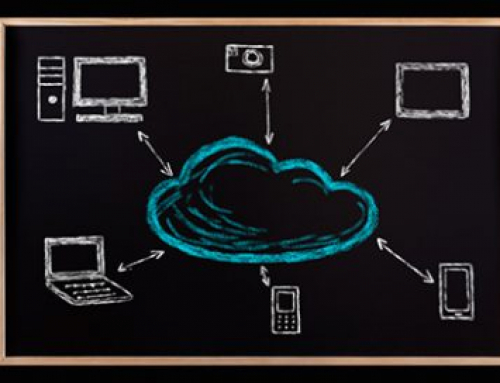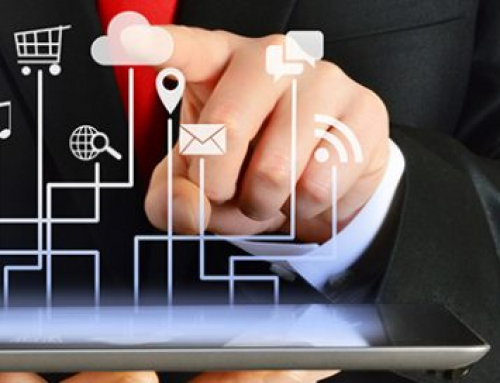
If you don’t have time for an hour-long break in your workday, a series of ‘microbreaks’ can also have a powerful effect on your body and your mind.
There’s a scene in the classic sitcom The Office, where David Brent – the ultimate cringe boss, with zero self-awareness – is doing some motivational speaking. “Laughter is the best medicine,” he says, explaining to his staff that it reduces stress and that he likes to do it several times during the working day. He demonstrates the technique by bursting into a solo manic cackle; though it only lasts about 30 seconds, it seems to go on forever. The whole room stares back in lethal silence.
It turns out that, for once, Brent may have been onto something. He was inadvertently describing what experts call a “microbreak” – any brief activity that helps to break up the monotony of physically or mentally draining tasks. They can last anywhere from a few seconds to several minutes and involve anything from making a cup of tea to stretching or watching a music video.
Though the breaks are tiny, they can have a disproportionately powerful impact – studies have shown that they can improve workers’ ability to concentrate, change the way they see their jobs, and even help them avoid the typical injuries that people get when they’re tied to their desks all day.
Since there’s no consensus on how long the ideal microbreak should last or how often you should have them, it’s up to workers to experiment with what works best for them. In fact, if you regularly lean back to talk to the person next to you or sneak a look at your phone, it’s possible that you’re a master of the technique already. According to Sooyeol Kim, a doctoral student from the University of Illinois and expert on microbreaks, there are only two rules: they should be short and voluntary.
Kim sees the breaks as a way to cope with the fact that most people spend the majority of their day at work. “But in reality our only official break is usually just lunch – though some companies provide a tea-time or half-time break, which is 10 or 15 minutes.”

Colleagues on a walk in Japan. A microbreak can consist of just a few minutes away from your desk
Calming effect
The technique was invented in the late 1980s by researchers from the National Institute for Occupational Safety and Health in Ohio and Purdue University in Indiana. They wanted to find out whether fleeting breaks could boost productivity or reduce stress, so they created an artificial office environment and invited 20 participants to “work” there for two days performing a “highly repetitive” data entry task.
Each participant was allowed one microbreak for every 40 minutes that they worked. During the break, which typically lasted just 27 seconds, participants stopped working but remained at their workstation.
After tracking the heart rates and productivity of their “employees” before and after each break, the scientists discovered that the pauses were, in fact, not as beneficial as they had hoped. Their workforce actually performed worse on some tasks after their respite – typing fewer keystrokes per minute, for example. But one thing did stick out: people who took slightly longer microbreaks tended to have lower heart rates, suggesting that they had calmed them down. Their work also didn’t require as much correcting.
After decades more research, the microbreak has redeemed itself. There are now mountains of evidence to suggest that they can be beneficial – reducing stress, keeping workers engaged and making work more enjoyable. In the case of the data entry study, because longer breaks were linked to a better recovery, the scientists speculated that perhaps the microbreaks were simply too short.
Why stretching matters
Despite the evidence that microbreaks are helpful, the only area in which they have entered mainstream use is as a way of reducing the risk of developing injuries in the workplace. “We recommend them to all our clients,” says Katharine Metters, an ergonomist, physiotherapist and health and safety expert at the ergonomics consultancy Posturite.
The latest figures by the UK government agency HSE show the scale of the problem that they’re tackling. Between 2017 and 2018 there were 469,000 workers in the UK suffering from musculoskeletal injuries acquired because of their jobs. According to Zaheer Osman, the founder and director of ergonomics consultancy Adept Ergonomics, most people don’t notice that they’re damaging themselves until they’re in pain – by which point it’s already too late. Like Metters, he strongly advocates the use of microbreaks.
The minuscule breaks are thought to help us to cope with long periods at our desks by taking the strain off certain body structures – such as the neck – that we’re using all day. “The important thing is that they are taken regularly,” says Metters. It should go without saying, but if you’re getting into microbreaks to give your body – rather than your brain – a rest, watching music videos won’t do the trick – it’s best to do something physical like standing up or changing position.
One area where this has become particularly apparent is surgery. In a field requiring the ultimate precision, where mistakes regularly cost patients their lives, it’s important to find ways to help these specialists avoid painful distractions and keep their zen-like focus. Back in 2013, a small study looked at whether microbreaks can help. Two researchers from the University of Sherbrooke, Quebec, tested 16 surgeons to see if tiny, 20-second breaks every 20 minutes affected how physically and mentally tired they were.
For the experiment, first the surgeons were “stressed out” by performing complex real-life operations, and then assessed in an adjacent room. There they were asked to trace the outline of a star with their surgical scissors (a variant on a classic experimental game, which in this case was used to test their precision) and to see how long they could hold up a heavy weight with an outstretched arm.
Each was tested three times: once before an operation, once after an operation where they were allowed microbreaks and once after a surgery with no microbreaks. During the breaks, they were asked to briefly leave the work area and do some stretches.
Remarkably, the surgeons were seven times more accurate in their drawings after operations where they were allowed microbreaks. They also had half the levels of physical fatigue and felt less pain in their backs, necks, shoulders and wrists.
Disengaging from work
Not only do microbreaks come with a range of serious benefits, but they give workers the license to indulge in what can look suspiciously like time-wasting. Taking time out to surf the internet – though not for more than 12% of the day, according to one study – or gaze at flowering meadows can improve productivity and help employees concentrate. In fact, some scientists believe that enjoying your microbreaks is an essential part of how they work.
Take a study conducted by Kim in 2018. Together with colleagues from the University of Illinois, he wanted to find out whether microbreaks could help people working in emotionally draining jobs – particularly where there’s a gap between how they feel inside and the way they must appear in public. The team chose call centres as the ideal place to study this.
The participants were a pool of telemarketers from South Korea who sold products like credit cards and insurance. After an initial survey, each was asked to provide their daily sales performance records for a two-week period, during which they were also asked to complete a survey before and after each work day. These included questions about their “positive affect” – the degree to which they were having positive feelings, such as happiness and optimism – workload, and any microbreaks that they had been taking.
The results were striking. Those who didn’t feel engaged with their jobs seemed to benefit from taking microbreaks; they were linked to increased productivity and more positive feelings. But this was only the case for breaks which involved certain activities, like relaxing, chatting to colleagues or other, more demanding activities, like browsing the internet. Oddly, breaks that were used to snack didn’t provide any benefits.
One explanation is that snack breaks tended to overlap with other types of winding down, like being sociable, making it harder to discern their impact. But another explanation is that the other breaks were more enjoyable. “Just removing your hunger or thirst, does that always make you happy?” says Kim. “Sometimes it’s just removing your discomfort.”
The finding fits with the idea that microbreaks enable a process known as “psychological detachment”, which occurs when you mentally disengage from work-based tasks and allow your brain to recover. It’s all about actively shifting the focus of your thoughts, so that you’re not mulling over work while you’re trying to chill out.
Andrew Bennett, a social scientist, studied microbreaks for his doctoral thesis while he was at Virginia Commonwealth University. His major finding was that microbreaking by watching a funny video clip left people invigorated and more attentive, with lower fatigue and smaller delays in their response times during a cognitive test.
Rebrand it, if necessary
Of course, watching television clips might not go down well with your boss – but there are plenty of other ways that you can take microbreaks without looking like you’re skiving. Here are some tips from the experts.
“A good way of forcing yourself to have a break is to have a really large litre bottle of water at your desk. You’ll have to go for a toilet break – so that’s a good way of forcing yourself to stand up, while also staying hydrated,” says Osman.
Bennett’s top tip is not to let them drag on for too long. “A microbreak isn’t the time to catch up on several new episodes of a television show!”
Kim is keen to stress that how people spend their microbreaks should be down to them, since different industries are likely to accommodate different types of break. “Organisations may want to provide a kind of free environment when their employees can take their recovery opportunities based on their needs, and train their employees how to balance their pressure and wellbeing,” he says.
Metters recommends doing some stretches at your desk, walking to the window to see what’s going on outside – “That relaxes my eyes and my brain,” she says – or even just leaning back in your chair for a while. If you’re worried that you might struggle to space your breaks evenly, she suggests placing a sand timer on your desk.
If you plan on asking your employer for permission to take microbreaks, Osman has a clever tip: don’t call it a break, call it a “change of activity”. They might get concerned at the prospect of their staff watching videos of famous cats or checking their phone every few minutes.
Equally, if you catch your boss spontaneously bursting into laughter, or spot your colleagues touching their toes in between meetings, bear in mind they may just be resetting their brains ahead of their next burst of productivity.
Source: http://www.bbc.com/capital/story/20190312-the-tiny-breaks-that-ease-your-body-and-reboot-your-brain






